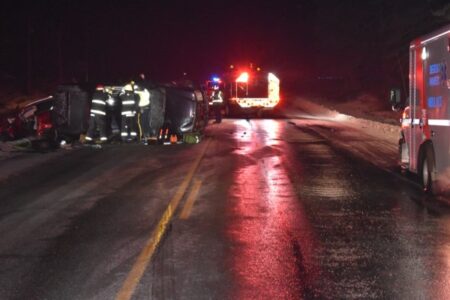Local Energy Heroes
“…the basic cause of the energy crisis is not scarcity, it is moral ignorance and weakness of character. We don’t know how to use energy or what to use it for. And we cannot restrain ourselves. Our time is characterized as much by the abuse and waste of human energy as it is by the abuse and waste of fossil fuel energy.”
– Wendell Berry
We have an obsession with producing energy and we’re addicted to using it.
As if these two character flaws weren’t bad enough, energy prices are rising faster than the rate of inflation.
If you drive a vehicle it will come as no surprise that Statistics Canada says gasoline prices rose 4.7 percent in the year up to September 2012.
Electricity price increases in BC are climbing upward even faster.
Following increases of 11 percent in 2010, 8 percent in 2011, and 7.07 percent on April 1, 2012, BC Hydro’s 1.44 percent increase scheduled for 2013 is just a lighter hammer blow.
There’s only one welcome breather to beleaguered homeowners – Stats Can reports that natural gas prices declined 14.2 percent in the 12 months to September 2012.
It is mind-boggling how much energy we use to provide the goods and services we consume – a 10-fold increase from a century ago.
In 2010, it is estimated the world’s humanity consumed approximately 550 exajoules or 523 Quadrillion BTUs of primary energy.
(One exajoule is equivalent to 174 million barrels of oil and one barrel of oil yields 19.4 gallons of gasoline, enough to drive my Toyota Corolla about 1,560 kilometres or 970 miles).
Cheap energy is becoming a distant memory, so what’s the solution to both escalating costs and spiralling usage?
As expounded by Herman Scheer – the architect of Germany’s feed-in tariff system that made his country a leader in renewable energy use – we need an energy system that has hundreds of thousands of owners instead of a few.
In other words, we need to democratize our energy system so it is “of the people, by the people, and for the people”.
Energy expert and author Greg Pahl adds a vital fourth description – “from the people” – and we now have a growing number of such examples in Nelson.
Here’s an instance:
The Seed Network in Nelson partnered with another Nelson company, Omineca Solar Designs, to install an array of 22 solar photovoltaic panels on the south-facing roof of 607 Front Street (the Reo’s Videos building).
The 5.17 kilowatt solar system is tied into the Nelson Hydro system – the first commercial solar grid tied energy system in the city – meaning that when The Seed produces more power than it needs, solar power from the panels will feed into the city’s hydroelectric distribution system.
When The Seed needs more power than its panels can provide, it will draw electricity from the city’s grid like any other customer. A digital bi-directional meter will monitor the energy going in each direction.
“Our office was very concerned about our energy and environmental footprint,” saidThe Seed partner Bradley Roulston.
“We hope this inspires other businesses to start becoming more aware of their energy use and snowballs into more local energy efficiency projects.”
Roulston said The Seed is aiming to be net zero with Nelson Hydro within a year, “net zero” meaning that the Seed will buy back as much as it sells.
The Seed Network will document the process through a video and blog, educating not only the local community, but other small businesses worldwide.
“This should be a benchmark and example for all other businesses, small or large, in the West Kootenay,” said Omineca owner Steven Thomson. “We have to work together to make a difference.”
Contact him at steven@ominecasolar.com if you’re interested in their commercial energy program.
The total cost of The Seed’s solar project was $34,000, but this was offset by a $25,000 grant from LiveSmart BC, one of 12 small businesses to qualify for provincial funding in October.
Another local case in point:
Averaged over a year, Nelson receives 3.5 hours a day of usable solar energy.
On Bedford Road in Blewett, Lukas Armstrong and his brother Max Karpinski are taking advantage of that sun to build a Passive House that will have total energy costs under $1,000 a year – 90 percent less than an average house.
Passive House is an approach to building construction that dictates space heating must consume no more than 15 kilowatt-hours of energy per square metre of floor area.
This is achieved through dramatic improvements in the thermal and air tightness properties of the building envelope.
Armstrong is not your typical house designer – he has a Bachelor of Industrial Design, a Masters of Architecture and is an accredited Leadership in Energy and Environmental Design (LEED) professional.
Karpinski is a licensed builder and a Red Seal Master Painter and Decorator with eighteen years experience. They call their company Local Design Build.
The walls of the Blewett Passive House consist of a triple stud-frame system with the outer two walls separated to create an approximately 14-inch thick insulated wall. The walls, floor and ceiling will all be approximately R72, using wet blown cellulose and mineral wool.
“The third stud wall, called the installation cavity, is built on the inside of the vapour barrier,” said Armstrong. “This cavity holds all of the plumbing and electrical and is critical to ensure that the vapour barrier is perfectly sealed in order to achieve the all important .6 air changes per hour mandated by the Passive House Institute.”
He said .8 air changes per hour was achieved in the last house the brothers built, without the use of an installation cavity.
“It’s all in the craftsmanship!” says Armstrong.
A two-storey, 2,400 square foot structure, the building will have three separate living areas – one for Armstrong and his fiancée, one for Max and his girlfriend, and one for the brothers’ mother.
There will be two 600 sq ft living areas and one 1,200 sq ft space reflecting Armstrong’s philosophy of building small to save resources and energy.
Another local business – Harrop Proctor Forest Products – provided all the Forest Stewardship Council (FSC) certified timber stair material.
Armstrong said the home may cost about 10 percent more than conventional construction, but its energy saving features have garnered funding assistance from FortisBC and Local Design Build has been awarded provincial funding from the CMHC “Super-Efficient New Construction” program to develop energy efficient housing in BC.
The Blewett Passive House will be plumbed and wired for future solar thermal and solar photovoltaic capabilities. Contact Armstrong at lukas.armstrong@mac.com or 250-219-1878 to set up a house tour.
Retrofitting a City
More net zero energy efficient new houses are badly needed, but most of us live in existing homes that will still be occupied in 40 years. What can be done for them?
The City of Nelson came up with one answer this year when it launched its EcoSave Energy Retrofits Program which recently won a FortisBC Conservation Leadership Award.
The program is the first of its kind in Canada, combining home energy assessments with access up to $16,000 in low interest on-bill financing. The objective is to achieve a savings of 30 percent for both gas and electricity consumption combined in retrofitted homes.
Program participants are eligible for rebates up to $7,000 through the LiveSmart BC Efficiency Incentive Program.
Home owners outside the city but still in the Nelson Hydro service area can obtain identical financing options through the Nelson and District Credit Union.
“It all starts with a home energy assessment,” said EcoSave program coordinator Carmen Proctor.
“A local Certified Energy Advisor will assess your home and then mail or email a customized retrofit plan for your house,” adds Proctor. “This energy efficiency evaluation report will include all of the recommendations that were discussed during the visit.”
Proctor is enthusiastic about the program benefits.
“It will reduce costs on your utility bills, improve the comfort of your home, and have a positive impact on the environment by lowering greenhouse gases.” Contact Carmen at cproctor@nelson.ca for program details.
We humans have freedom of choice, but who among us freely choose to pay more for our energy?
Now is a perfect time for each of us to become a local energy efficiency champion – and follow in the footsteps of Bradley, Steven, Lukas, Max, and Carmen.
Michael Jessen is a Nelson-based energy specialist and owner of the consultancy Zero Waste Solutions. He is also the energy critic for the Green Party of BC and can be reached by email at zerowaste@shaw.ca
RESOURCES:
Greg Pahl is the author of Power From the People: How to Organize, Finance, and Launch Local Energy Projects. Find out more at http://www.resilience.org/
The Seed Network can be found at http://www.theseednetwork.com/
Omineca Solar Designs is at http://ominecasolar.com/
LiveSmart BC is found at http://www.livesmartbc.ca/
Lukas Armstrong Design + Consulting is at http://lukasarmstrong.com/
Photos of Lukas’ and Max’s triplex in Blewett can be found at http://lukasarmstrong.com/2012/10/stairs-and-the-second-stud-frame/#comment-58
The Canadian Passive House Institute offers training and information and can be found at http://www.passivehouse.ca/
Harrop Procter Forest Products is at http://www.hpcommunityforest.org/products/products.html
Find out more about the EcoSave Energy Retrofits Program at http://www.nelson.ca/EN/main/services/electrical-services/energy-grants.html
A list of BC energy efficiency incentive programs can be found at http://www.citygreen.ca/incentives
ENERGY SAVING TIPS:
• 60 percent of residential energy usage is for heating. Leave your thermostat at a constant temperature (18 to 19 degrees is perfect). Avoid heat spiking – don’t turn the thermostat down all the way at night or turn it all the way up in the morning. Try not to use plug-in space heaters.
• 22 percent of residential energy usage is for heating hot water for showers, washing clothes, and dishwashers. Shorten your showers and use a low-flow showerhead. Wash clothes in cold water. Hang clothes to dry outside when practical and rig up an indoor clothesline when not – other than your fridge, dryers use more energy than other home appliances. Run a dishwasher only when full and air dry dishes in the dishwasher.
• 18 percent of residential energy usage is for lighting and appliances. Plug your television, computer, and other electronic devices into power bars / surge protectors and turn them off when not in use as they draw energy 24/7. For identical reasons, don’t leave rechargeable devices plugged in all the time as they continue to suck energy even if not in use. Turn lights off if you are not in the room – lights stop using energy as soon as they are turned off, so your savings add up by the minute. Use energy saving light bulbs like LED and CFLs.























Comments